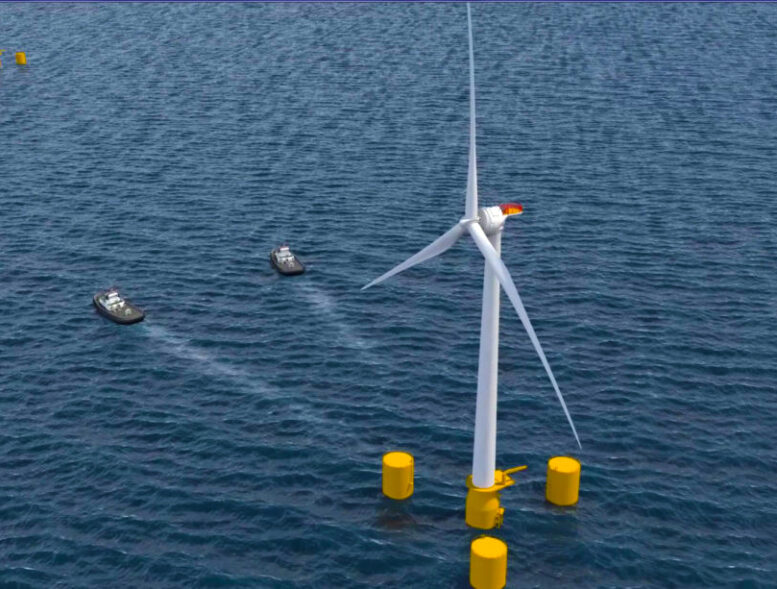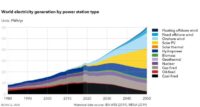A new report forecasts that with the right drivers in place, the installed capacity of floating wind energy will grow from the existing 100 MW to 250 GW in 2050 – a 2000-fold increase.
The study from risk management and quality assurance company DNV GL states that because floating wind energy is unrestrained by ocean depth, “it will be an especially attractive option to bring wind power in reach of much more of the world’s population, including the megacities of Asia Pacific.”
Floating wind could contribute 2% of the world’s power supply by 2050 says DNV GL, but to get to that stage demands more comprehensive industry standards and risk management to enable the technology to scale.
According to the report, the cost of floating wind energy will fall approximately 70% by 2050 to a global average of €40 per MWh and offer new opportunities to players in the offshore wind, oil & gas and maritime industries as they shift their portfolios to become less dependent on fossil fuels.
Although the average cost is not expected to become less than that for bottom-fixed wind, the price difference will narrow as both fall. Key to these savings will be the introduction of larger turbines, larger wind farms, significant technology developments and the creation of a highly cost-competitive supply chain.
The report highlights how learnings from established offshore industries will be vital for floating wind and, in particular, standardization and risk management will be essential to build stakeholder confidence.
“We know floating wind is technically feasible – the challenge now is to move rapidly to commercial deployments,” said DNV GL group president, Remi Eriksen.
“There is a wealth of expertise to call on. The know-how from bottom-fixed offshore wind, the competences of shipyards and of oil and gas contractors all broadly align with the technical, logistical and operational challenges of floating wind.”
Magnus Ebbesen, Floating Wind Lead at DNV GL, added: “There is a lot of room for innovation and optimization, but also for brand new solutions. That brings some risk, but risks that can be managed and minimized.”
“With an evolving technology, flexibility and forward thinking are imperative. Get it right, and floating wind presents a very attractive opportunity with healthy returns – for investors and the planet.”
Download the report from https://protect-eu.mimecast.com/s/7KVtCyP4MIJ8XOlSQ7gPG.



